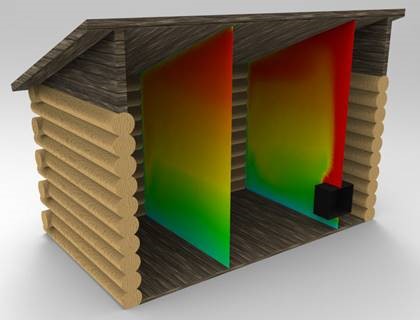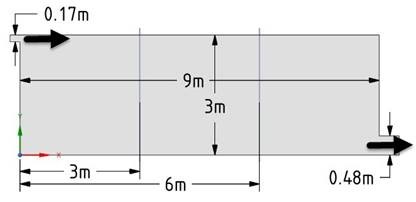I have been catching up on episodes of The Last Alaskans and unlike other reality shows, the only drama in this one is man’s struggle to survive in a very hostile environment. I was impressed with how they stay in small cabins during the winter (the camera crew stays in tents) when the temperatures get down to -30F and even lower.
Situated in very remote locations, the trapper cabins are rather small and usually inhabited by only 1 or 2 occupants. I was interested in the heating efficiency when burning wood is the only energy source. Inspired, I decided to run a conjugate thermal CFD simulation (see image below) to determine the energy requirements and temperature distribution. The software showed that 2000W, at a minimum, would be needed from the wood burner to keep the cabin somewhat comfortable for a -30F outside temperature with no wind or solar radiation. This would be a best case scenario since the logs don’t always fit tightly together and the leaks are plugged with moss. As a result, there would typically be some amount of cold air intrusion which would add to the energy costs.
Finally, given the extreme temperature variation from internal to ambient (~100F) and the marginal insulation, there would be a non-uniform temperature distribution; the inside surfaces of the logs can get as cold as 50F.

Temperature distribution in cabin. Note hot air plume rising from wood stove.




Comments